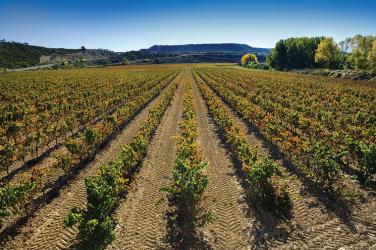More often than not, the wines that work best with a particular dish are those that complement the predominant flavors in the recipe. Meats of all kinds are usually the dominant flavors that grab the taste buds, so the palate needs something that softens them, enhances them or stands up to them. Throw in spices and you add another level of complexity to the dish, and a higher degree of difficulty to the food-wine pairing.
So, how to pick a wine for a dish that may not be vegetarian, but that features vegetables as the lead ingredient? By looking at the whole dish.
Rutabaga — a cross between cabbage and turnips — can have a slightly bitter taste that is best softened by salty meats like bacon. It also lends itself to cheeses and is often served mashed. Therefore, it should not come as a surprise how well it works mixed in with Italy’s carbonara sauce, which is usually a creamy mixture of smoked bacon or Italian Guanciale, egg, hard Italian cheese and pepper. A crisp, lightly oaked Chardonnay complements the various elements of the dish.
Argentina, while best known for its reds, produces a number of white wines that can handle rich sauces like carbonara. Ninety years old this year, and still in the same Italian family that started it in 1928, Bodega Valentin Bianchi has a value-priced label called Elsa that consistently over-delivers in terms of quality vs. price. Elsa Chardonnay, with its fresh fruit aromas and flavors and a vibrant acidity, as well as some heft in the mouth that is not often found in other Chards at the same price, is definitely a winner with this unique take on an Italian classic.
Turnips are kin to rutabaga, but a bit better known in the United States. Making taco shells with turnips is an innovative use of the vegetable — and then filling the shell with other vegetables such as mushrooms, squash, black beans and kale (and hot sauce for a spicy kick) – offers a real wine-pairing challenge.
A dry red wine that is bursting with luscious fruit and soft tannins should cover the mélange of flavors in these tacos, as well as take the heat from the hot sauce. We’re going with a Californian — Ironstone Vineyards Merlot, with rich, ripe black cherry and black plum fruits front and center on the palate, as well as a little vanilla and toast from light barrel-aging coming through to a rounded and complex finish.
You can’t ignore the beef flavor that emanates from beets roasted in beef fat, even if beets are the main ingredient in the dish. Spanish Tempranillo wines are a great accompaniment to beef, and the sweetness of the beets is not too much for a well-made Tempranillo. Vina Eguia from Rioja, Spain’s most famous wine region, speaks the truth when tasted (“eguia” means truth in the Basque language, which is spoken in much of the area where the vineyards are found). Mature red fruit and licorice with coconut, vanilla and balsamic notes, greet the mouth in a full, elegant way, and are in harmony with the dish’s predominant flavors. And, like the other wines above, at a value-price of under $15.







